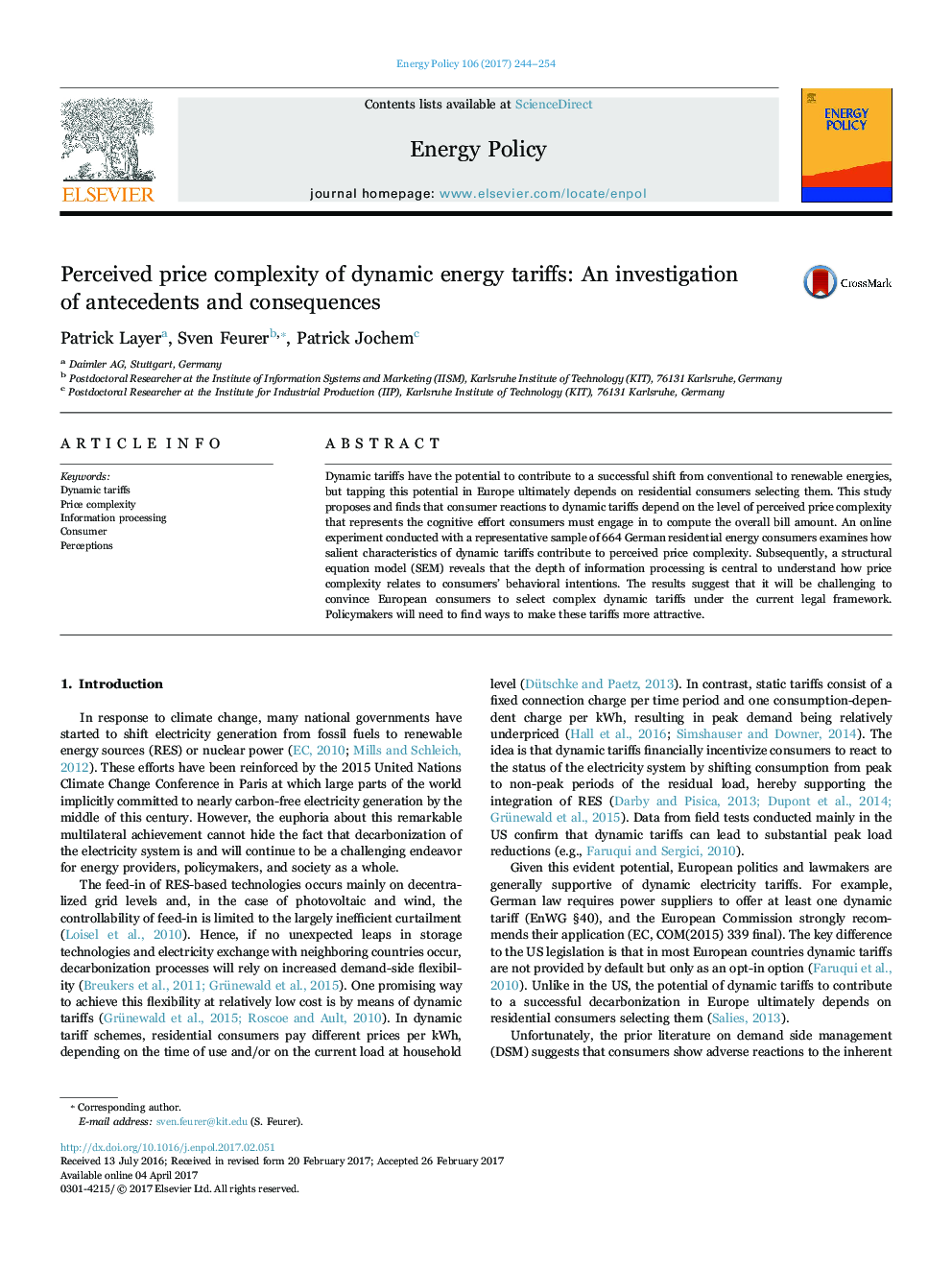| کد مقاله | کد نشریه | سال انتشار | مقاله انگلیسی | نسخه تمام متن |
|---|---|---|---|---|
| 5105778 | 1481252 | 2017 | 11 صفحه PDF | دانلود رایگان |
- Little is known about the processes by which consumers evaluate dynamic tariffs.
- In this evaluation process perceived price complexity plays a central role.
- Tariff type, price endings, and discount presentation format drive price complexity.
- Perceived price complexity decreases the depth of information processing.
- A decreased depth of information processing ultimately leads to lower behavioral intentions.
Dynamic tariffs have the potential to contribute to a successful shift from conventional to renewable energies, but tapping this potential in Europe ultimately depends on residential consumers selecting them. This study proposes and finds that consumer reactions to dynamic tariffs depend on the level of perceived price complexity that represents the cognitive effort consumers must engage in to compute the overall bill amount. An online experiment conducted with a representative sample of 664 German residential energy consumers examines how salient characteristics of dynamic tariffs contribute to perceived price complexity. Subsequently, a structural equation model (SEM) reveals that the depth of information processing is central to understand how price complexity relates to consumers' behavioral intentions. The results suggest that it will be challenging to convince European consumers to select complex dynamic tariffs under the current legal framework. Policymakers will need to find ways to make these tariffs more attractive.
Journal: Energy Policy - Volume 106, July 2017, Pages 244-254
